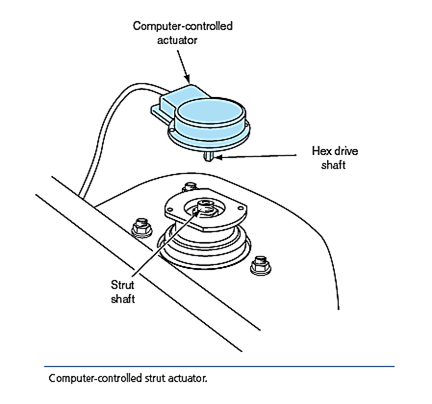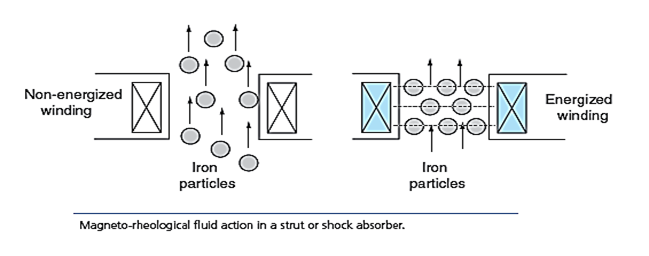←
Automobile Engineering
Electronically Controlled Shock Absorbers And Struts
Introduction:
Some electronically controlled shock absorbers and struts contain a synthetic magnetorheological fluid that contains numerous small, suspended metal particles. Many cars equipped with computer-controlled active suspension systems. In these systems, a computer-controlled actuator is positioned in the top of each shock absorber or strut.
Computer-controlled strut actuator:

- The shock absorber or strut actuators rotate a shaft inside the piston rod, and this shaft is connected to the shock valve.
- Many of these systems have two modes, soft and firm. In the soft mode, the actuators position the shock absorber valves so there is less restriction to the movement of oil.
- When the computer changes the actuators to the firm mode, the actuators position the shock valves so they provide more restriction to oil movement, which provides a firmer ride.

- Some electronically controlled shock absorbers and struts contain a synthetic magnetorheological fluid that contains numerous small, suspended metal particles.
- Each shock absorber contains a winding that is energized by the suspension computer. If the shock absorber winding is not energized, the metal particles in the fluid align randomly in the fluid.
- Under this condition, the fluid has a mineral oil–like consistency and the fluid moves easily through the shock absorber orifices.
- If the suspension computer energizes a shock absorber winding, the metal particles in the fluid are aligned into fibrous structures.
- When this occurs, the fluid has a jelly-like consistency for a firm ride.
- The computer can change the shock absorber damping characteristics in 1 millisecond (ms) and can also supply a varying amount of current through the shock absorber windings to provide a wide variety of shock absorber damping characteristics.